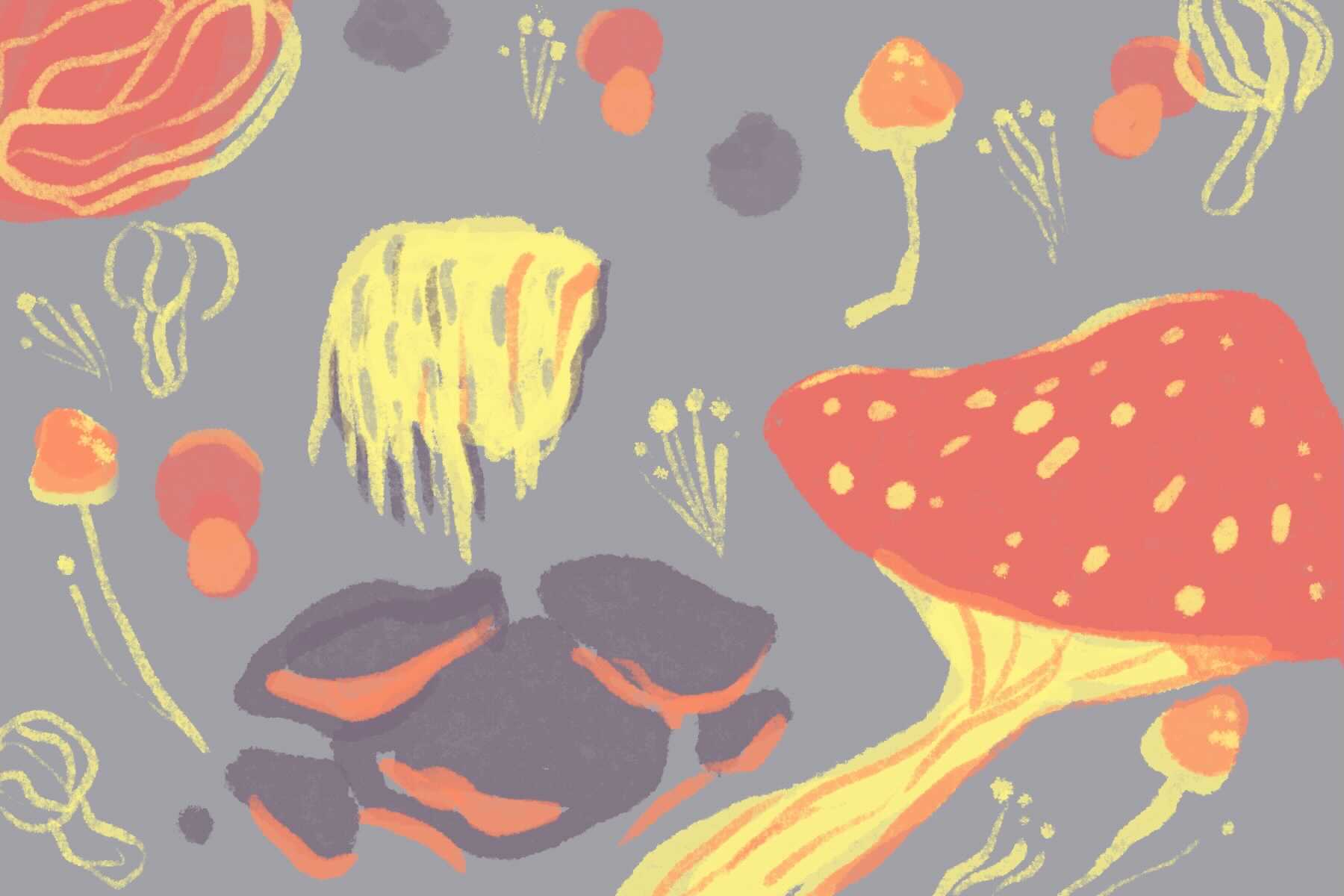DISCLAIMER: In the best interests of the reader, it is advised that you conduct your own research on psilocybin should you find interest in the medical applications discussed below.
“We shall by morning
Inherit the earth
Our foot’s in the door”
The concluding lines to Sylvia Plath’s poem “Mushrooms” set an ominous tone — an unsettling feeling that there’s some small but weighty thing we’re looking past that holds a lot more presence than we give it credit for. While the nature documentary “Fantastic Fungi” is anything but ominous, its compelling displays of time-lapse cinematography and well-presented scientific research and testimonies convey a clear message: We as the human race are SORELY looking past our mushroom risottos and the astounding beauty and versatility of fungi. Covering everything from spirituality and politics to modern medicine and environmental conservation, producers Louis Schwartzberg, Lyn Lear and Elease Lui have created a film that has something for everyone.
Released in October 2019, “Fantastic Fungi” sets Brie Larson’s eerie but light narration to mesmerizing time-lapsed visuals of spreading fungal mycelial networks, mushroom species of all shapes and sizes and swirling kaleidoscopic imagery reminiscent of tie-dye patterns. Mycologist Paul Stamets from Washington state takes the lead in steering the documentary from topic to topic, discussing the biological, sociological and environmental roles of fungi as well as their medicinal and psychiatric applications.
Stamets presents himself well, offering charismatic but sincere guidance through his interests in the field of mycology, as well as how he and like-minded mycologists and enthusiasts hope to see fungi solve many of the world’s problems. Overall, the structure of the documentary mirrors that of Stamets’ 2008 TED talk, “6 Ways Mushrooms Can Save the World,” which elaborates extensively on these points, offering a far more personalized intrigue.
If the hour-and-21-minute film seems a bit daunting, the 17-minute TED talk can serve as a quicker digestion of Stamets’ sentiments, albeit a less charming, more lecture-oriented one. However, with a 100% rating on Rotten Tomatoes, the film itself is certainly worth the time.
The start of the documentary lays the groundwork of what exactly a fungus is: While we can certainly all identify the most basic outline of a mushroom, Stamets seems to understandingly nod his head at this amateur conception, before revealing the image in its entirety. Briefly, fungi belong to a biological kingdom of their own, meaning they are not classified as either plants or animals but are something entirely different that sits somewhere in between. What we easily identify as a mushroom is actually the “fruit” of something MUCH bigger lying beneath the soil from which it grows.
Mycelial networks make up the majority of fungal anatomy, serving as a vast web of thin filaments that can spread for up to miles around. For comparison’s sake, picture the vast neural network that exists in our brains, scale it up, then place it in the soil alongside the roots of trees and other plants. Just like our own neural networks, these mycelia also communicate, sending and receiving messages to both their own bodies and, interestingly, the other fungal bodies and plants around them.
From cheeses to antibiotics, “Fantastic Fungi” puts fungi on a pedestal of respect from their undermined position. On top of this, the environmental impact of fungi also makes an impression: Stamets notes that beyond playing a crucial role in the supposed “circle of life” by breaking down organic matter and subsequently promoting growth, fungi can encourage environmental conservation by cleaning up oil spills and leaving abundant biodiversity in their wake. With this perspective, any stigma against fungi falls flat, and a new, more charming image of companionship takes its place.
Beyond the visual and conceptual stigmas surrounding fungi, “Fantastic Fungi” also breaks down the controversy surrounding drug treatment with fungal compounds from “magic mushrooms” and lion’s mane mushrooms. It’s no secret that the world at large tenses at the mention of “drugs,” but the word itself is a misnomer: Caffeine and paracetamol — both staples in most modern households — are classified as drugs as much as psychedelic compounds.
In fact, before President Richard Nixon’s “War on Drugs” in the 1970s, psychedelic drug use was a part of psychiatric clinical studies and pharmacology syllabuses at universities. Despite magic mushrooms’ party-life reputation, Stamets and other experts give insight into the astounding effects of fungal compounds on monster diseases such as Alzheimer’s, cancer and depression. The main focus sits with psilocybin, the compound found in “magic mushrooms,” whose effects Stamets gives personal testimony to, elaborating how an intense mushroom trip helped cure him of a socially debilitating stutter in his college days.
More impactful are perhaps the emotional testimonies of two terminally ill cancer patients who recall how their professionally guided psilocybin trips with psychiatrists from Johns Hopkins University helped them overcome the immense fear surrounding their imminent fates. In fact, most people who undergo psilocybin treatment recall it among their top five most meaningful experiences.
Despite a research hiatus in the past 50 years, psilocybin is tentatively becoming relevant in research and clinical trials again. What makes this compound a supposed revolutionary treatment of weighty psychological disorders like depression is the molecular similarity it shares with the hormone serotonin
Serotonin plays a key role in the regulation of happy moods and a general feeling of well-being, so this molecular similarity lends psilocybin the ability to bind to the serotonin receptors in the human brain and exert a serotonergic effect on the body — ultimately proving itself a useful tool in sending people who suffer depression into remission. Stamets speaks with conviction on the therapeutic value of treatments with fungal compounds like psilocybin, especially with their wider availability and cheaper cost.
To further mystify the effects of psilocybin on the human brain, the American ethnobotanist Terence McKenna proposed that the species jump between us, Homo sapiens, and our lesser evolved ancestor, Homo erectus, relied on the consumption of psilocybin mushrooms. The aptly named Stoned Ape Hypothesis suggests that by consuming psilocybin and bearing the molecule’s effects, such as improved visual acuity, increased attention span and a wider dimension of spiritual perception, the brain of H. erectus evolved into the higher functioning brain we all enjoy today. While the hypothesis has not been confirmed within the scientific community, Stamets supports the theory behind it.
Ultimately, the moral of “Fantastic Fungi” is the overwhelming potential fungi have in the world at large, and that investments in research should be made by many factions of science — environmental conservation, pharmacology, psychology, chemistry … the list goes on. Whether you pronounce it “fun-guy” or “fun-ji,” Stamets garners newfound interest in his audience with his obvious passion and unwavering convictions. For a more immersive experience into the world of fungi, the “Fantastic Fungi” team encourages public support of their cause through their website and Instagram page.


















What’s up i am kavin, its my first occasion to commenting anywhere, when i read this paragraph i thought i could also
create comment due to this good article. https://Www.Sowintheword.org/PrayerZone/profile.php?id=867504